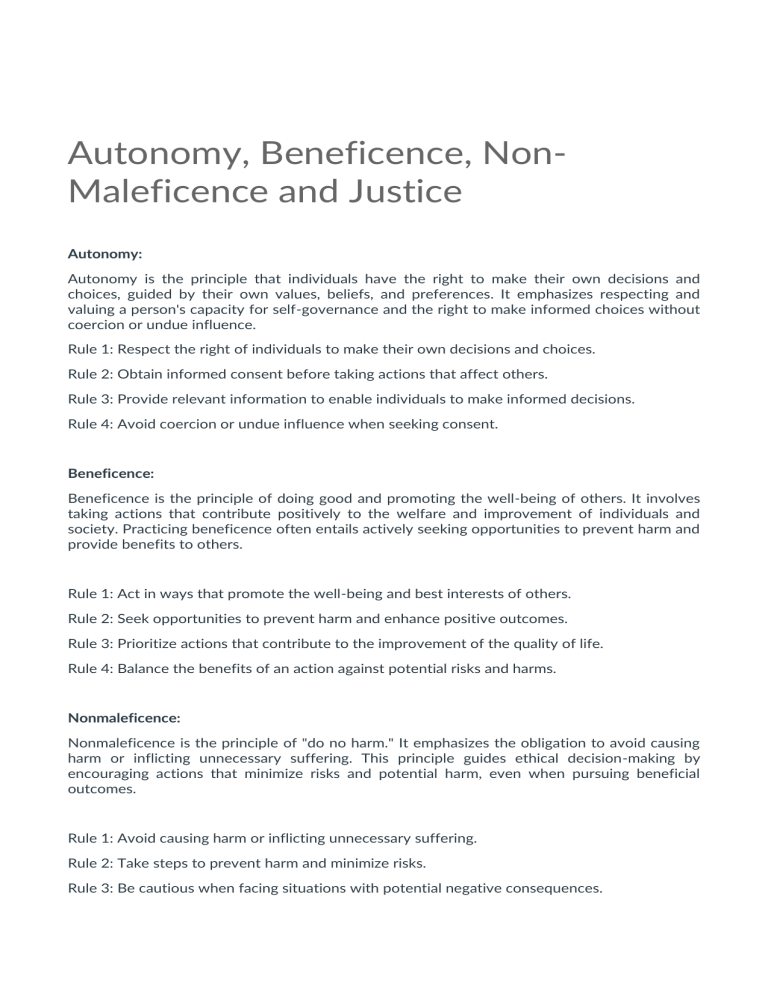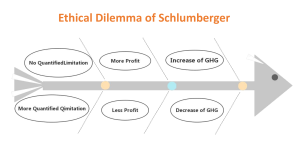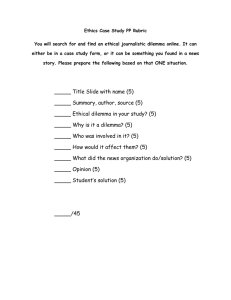
Autonomy, Beneficence, NonMaleficence and Justice Autonomy: Autonomy is the principle that individuals have the right to make their own decisions and choices, guided by their own values, beliefs, and preferences. It emphasizes respecting and valuing a person's capacity for self-governance and the right to make informed choices without coercion or undue influence. Rule 1: Respect the right of individuals to make their own decisions and choices. Rule 2: Obtain informed consent before taking actions that affect others. Rule 3: Provide relevant information to enable individuals to make informed decisions. Rule 4: Avoid coercion or undue influence when seeking consent. Beneficence: Beneficence is the principle of doing good and promoting the well-being of others. It involves taking actions that contribute positively to the welfare and improvement of individuals and society. Practicing beneficence often entails actively seeking opportunities to prevent harm and provide benefits to others. Rule 1: Act in ways that promote the well-being and best interests of others. Rule 2: Seek opportunities to prevent harm and enhance positive outcomes. Rule 3: Prioritize actions that contribute to the improvement of the quality of life. Rule 4: Balance the benefits of an action against potential risks and harms. Nonmaleficence: Nonmaleficence is the principle of "do no harm." It emphasizes the obligation to avoid causing harm or inflicting unnecessary suffering. This principle guides ethical decision-making by encouraging actions that minimize risks and potential harm, even when pursuing beneficial outcomes. Rule 1: Avoid causing harm or inflicting unnecessary suffering. Rule 2: Take steps to prevent harm and minimize risks. Rule 3: Be cautious when facing situations with potential negative consequences. Rule 4: Choose the course of action that does the least harm while achieving a positive outcome. Justice: Justice refers to fairness, equality, and the equitable distribution of resources, opportunities, and burdens in society. It involves treating all individuals with impartiality and without discrimination, while ensuring that individuals are given what they deserve based on relevant criteria. The principle of justice is concerned with creating a just and inclusive society where everyone is treated fairly. Rule 1: Treat all individuals fairly and impartially, without discrimination. Rule 2: Ensure equitable distribution of resources and opportunities. Rule 3: Uphold the rights of individuals and provide equal access to benefits. Rule 4: Act in ways that contribute to the creation of a just and inclusive society. Case Study 1: Social Media Dilemma Background: Lily, a 16-year-old high school student, is an active user of social media platforms. She has a significant followers and is admired for her fashion sense and lifestyle. Lily's popularity has led to opportunities for sponsored posts and collaborations with brands. Scenario: One day, a well-known fashion brand offers Lily a substantial amount of money to promote their new clothing line on her social media platforms. However, Lily discovers that the clothing brand has been involved in unethical labor practices in developing countries. The brand's clothes are produced in factories where workers, including children, are subjected to poor working conditions and extremely low wages. Dilemma: Lily faces a moral dilemma. On one hand, she could accept the lucrative offer and continue promoting the brand, which could enhance her popularity and financial situation. On the other hand, she is aware of the harm caused by the brand's practices and feels conflicted about being associated with such unethical behavior. Ethical Considerations: Lily must weigh the principles of autonomy, beneficence, and justice. She needs to decide whether her personal gain and popularity outweigh her responsibility to not contribute to harmful practices. She must also consider the potential consequences of her decision on her reputation and the broader social and ethical implications of promoting a brand with unethical practices. Case Study 2: Academic Integrity Dilemma Background: John, an ambitious 18-year-old college student, is determined to excel in his studies and secure a scholarship for further education. He is enrolled in a highly competitive course with a final project that requires extensive research. Scenario: As the project deadline approaches, John finds himself overwhelmed and struggling to complete the research. He discovers a paper online that is perfectly aligned with his project's requirements. He considers copying parts of the paper without proper citation, as it would greatly improve his own work and increase his chances of earning a high grade. Dilemma: John faces an ethical dilemma regarding academic integrity. He must decide whether to plagiarize the online paper to achieve a better grade and potentially secure his scholarship, or uphold his integrity by conducting original research and properly citing his sources. Ethical Considerations: John's decision involves principles of honesty, nonmaleficence, and justice. He needs to consider the harm caused by plagiarism to his own educational development and the broader academic community. He must also reflect on whether gaining an unfair advantage through dishonest means aligns with his personal values and long-term goals. In both of these case studies, young people are confronted with ethical dilemmas that require careful consideration of their actions in light of fundamental ethical principles. These scenarios highlight the complex challenges that young individuals may encounter as they navigate their personal, academic, and social lives while striving to make ethical decisions. THREE STEPS IN ETHICAL DECISION-MAKING: 1. Identify the Ethical Dilemma: Recognize and define the ethical issue or dilemma you are facing. Clearly understand the conflicting values, responsibilities, or choices involved in the situation. Determine if the situation involves ethical principles such as honesty, fairness, or the well-being of individuals. 2. Evaluate Options and Consequences: Consider different courses of action and evaluate their potential outcomes and consequences. Analyze how each option aligns with ethical principles and values. Assess the potential benefits, harms, and implications for all stakeholders involved. 3. Choose and Justify a Decision: Select the course of action that best upholds ethical principles and aligns with your values. Provide a clear and rational justification for your decision based on the ethical analysis. Consider how the decision respects the rights and well-being of individuals and contributes to a just and ethical outcome. Case Studies Social Media Pressure and Body Image: Sarah, a 16-year-old high school student, struggles with low self-esteem due to body image issues. She sees her peers on social media sharing edited and filtered photos that present an unrealistic standard of beauty. Sarah feels pressured to conform to these ideals to gain acceptance and likes on her posts. She contemplates digitally altering her own images to fit in. Peer Pressure and Substance Use: John, a 17-year-old, is invited to a party by his friends where alcohol and drugs will be available. Although he is aware of the potential risks and his parents' strict rules against substance use, he fears being seen as "uncool" by his friends if he refuses to partake. Cyberbullying and Online Harassment: Alex, a 15-year-old, discovers that a group of classmates has created an anonymous social media account to make hurtful comments and spread rumors about other students. Alex is unsure whether to report the account to school authorities, as it might lead to confrontations with the bullies.


